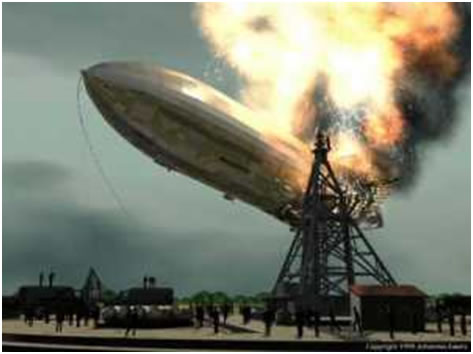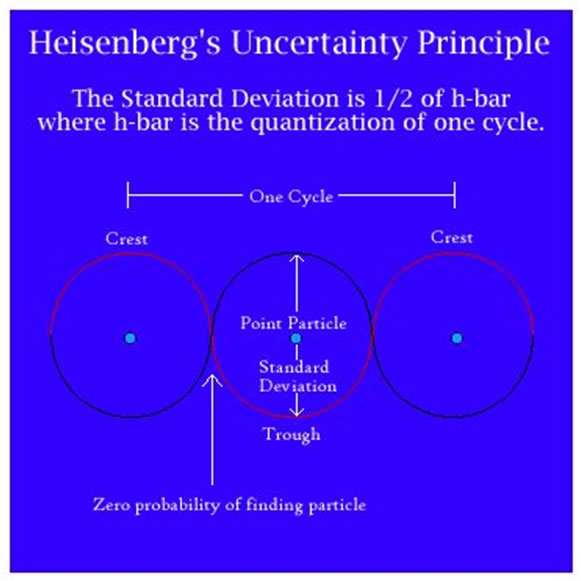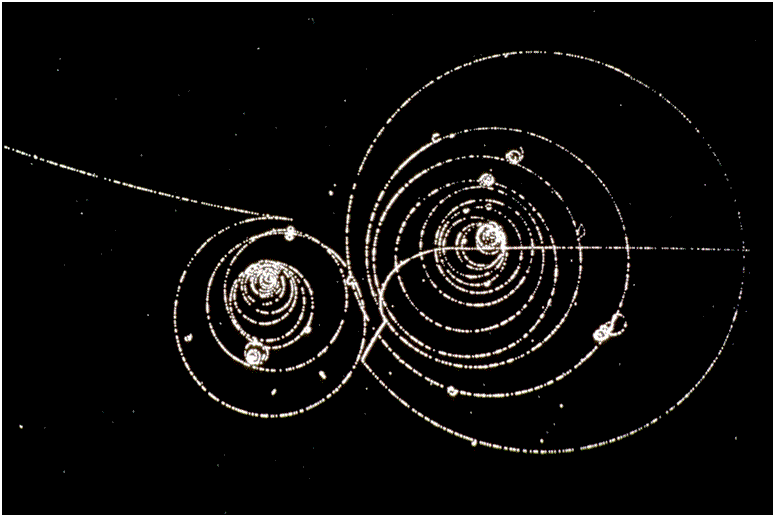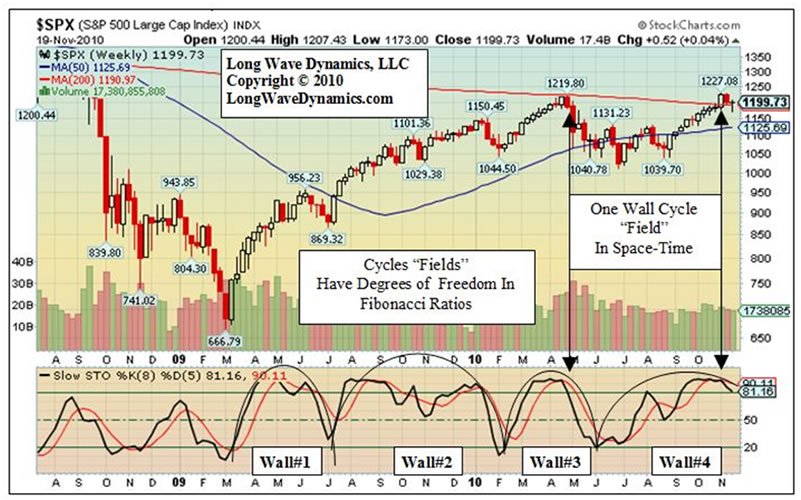Stock Market Hindenburg Crash Omen Meets the Heisenberg Uncertainty Principle
Stock-Markets / Stock Markets 2010 Nov 20, 2010 - 06:43 AM GMT Tracking Market Cycles as “Fields” in Price and Time - The rather ominous sounding Hindenburg Omen was the latest in a long line of one-off indicators said to be heralding an imminent global stock market crash. The basic premise of the Hindenburg Omen is worthy of contemplation. Extreme readings in the number of shares reaching new highs and shares reaching new lows simultaneously are the basic concept behind this signal of imminent market disaster.
Tracking Market Cycles as “Fields” in Price and Time - The rather ominous sounding Hindenburg Omen was the latest in a long line of one-off indicators said to be heralding an imminent global stock market crash. The basic premise of the Hindenburg Omen is worthy of contemplation. Extreme readings in the number of shares reaching new highs and shares reaching new lows simultaneously are the basic concept behind this signal of imminent market disaster.
However, what the stark divergences at the heart of the Hindenburg Omen are likely indicating is the difference in large cap global franchise companies that have hitched their wagons and destinies to the great emerging market phenomenon of the 21st century. This compares to enterprises mired in debt, with excess capacity and facing pricing pressures, all classic signs of a Kondratieff long wave winter season that continues blowing cold in developed markets.
The emerging market phenomenon is real. When the last long wave winter was ending in the 1940s, peripheral markets in the global economy were falling to communism. During this long wave winter season emerging markets are embracing free market capitalism. In fact, in many emerging markets government and business leaders are executing far more effectively than the former great entrepreneurial economic engine of the United States.

When comparing the overhang of debt, excess capacity and unfunded pensions of the unproductive masses trapped in the long wave winter in the developed world, and the youth, hard work, hope and energy in the budding spring season of emerging markets, the opening of The Tale of Two Cities comes to mind. “It was the worst of time, it was the best of times, it was the age of wisdom, it was the age of foolishness, it was the epoch of belief, it was the epoch of incredulity, it was the season of Light, it was the season of Darkness, it was the spring of hope, it was the winter of despair.” Maybe the Dickens Omen for the radical market divergences between developed and emerging markets is more appropriate than the Hindenburg Omen.
That fact is that any single indicator, such as the Hindenburg Omen, is only one indicator of the human action that is the result of global market activity. The complexity of markets requires a more comprehensive principle of human action that explains the timing for the rise and fall of markets, the boom and bust. There is likely a global market crash lurking in the future before the developed world discovers the end of a long wave winter and smells the flowers of spring, but there are many more dynamic forces at work than the Hindenburg Omen.
The Heisenberg uncertainty principle is actually more helpful for explaining market cycles than the Hindenburg Omen. The application of the Heisenberg principle is not as complicated as it sounds. First, it is important to recognize that the Heisenberg uncertainty principle applies to the field of science known as quantum field theory. Don’t let the quantum stuff put you off. It will all make sense shortly.
James Maxwell discovered the electromagnetic field. Torrance said this about Maxwell, “He conceived and developed the nature of the field and established the reality of the field as the underlying reality of all spatio-temporal (space-time) phenomena.” Bottom line, Maxwell discovered that anything occurring or existing in space-time is part of a field.
So what does this have to do with the price of real estate in China? What this means is that the housing market, high frequency trading, the hedge fund industry, Wall Street bonuses, even the management of your investments, and you reading this article, are all occurring as part of a field or fields that are unfolding in space-time. This means that Federal Reserve monetary policy, such as QE2, is also occurring in space-time.
Now back to the Heisenberg uncertainty principle. What the Heisenberg uncertainly principle says is that certain pairs of properties like position and momentum cannot be know simultaneously or measured to any degree of high precision. In fact, the more accurately you measure one property in a field, the less accurate your measurement of the other is guaranteed to be. Essentially, and I generalize with liberty, when you try and measure something that is happening as part of a greater field your measurement will be affected by other things that are happening in a field that are also impacting the other property. The more closely you measure, the more wide of the mark you will be.

Now here is the first application. Most market observers are now becoming educated on the fact that the U.S. Federal Reserve System has two mandates; 1) stable prices, and 2) maximum employment. When the Fed lowers rates and tries to get maximum employment then prices are not stable, like housing prices that get out of control in a bubble. When they try and adjust for price stability, maximum employment gets short shrift. The more they measure and then try and manipulate, the more they get it wrong. At a minimum, the Fed must be relieved of their dual mandate, which is making them bipolar when you back up and look at the big picture over multiple business cycles driven by bubble after bubble.
Bernanke has been given impossible multiple tasks. At minimum one of the mandates must be removed. No one could achieve the two mandates, not even Einstein, and he knew a few things about quantum fields. The German’s were all over this basic concept way ahead of the U.S., why do you think the ECB only has one mandate, which is price stability. The U.S. needs to follow the German/EU lead on central bank mandates.
The Federal Reserve policy, including QE2 and interest rates, as well as housing, CPI, taxes, fiscal policy, wages, copper prices, lumber prices, gold production, unemployment, death rates, etc., and we could go on and on infinitum, they are all essentially properties occurring in incredibly complex fields occurring in space-time in the global economy and financial markets. In fact, the Hindenburg Omen is just one property that is occurring in the great field of human action in markets. Investors may observe this so-called omen and make an investment decision based on it, but it is just one of many properties at work.
Where this line of reasoning really gets interesting is when you recognize that all of the economic and financial activity mentioned above is occurring in space-time, by definition it is therefore part of a field. You are likely one-step ahead of me at this point and realizing that all of the economic and financial activity listed above, plus a few million other aspects of global human activity, are also the properties in a business cycle. Of course business cycles are reflected in stock markets cycles. This suggests that stock market cycles are fields of human activity occurring in space-time. If this reasoning is correct, the implications are rather far reaching.
The Federal Reserve can affect the cycle, but they cannot stop it. They are only manipulating certain elements of the cycle. They pump in QE2 in the U.S., stocks go up in Brazil, Turkey and Peru, Grandmother Barker 95 and needing income gets a lower interest rate on her savings account, and vegetable prices rise in China.
What in fact occurs is that Federal Reserve policy exacerbates global business cycles and makes them worse than they otherwise would be in the end. They may also inadvertently shift excesses to the next larger cycle or field. They can soften the decline of a Wall cycle (20-week cycle) a few times and expand the cycle, then the larger business cycle expands and has a bigger bust, and the Kondratieff long wave winter season longer and deeper than it has to be.

This notion of cycles “fields” expanding and contracting brings up the fact that theoretical quantum physicists have discovered that fields appear to be directed by some sort of external degrees of freedom, independent of the field. This suggests it may be possible to estimate your position and momentum in the field of a stock market cycle, by recognizing it is a field guided by degrees of freedom.
Being a financial market analyst and not a theoretical physicist the first thing that came to mind when I came across the possibility of degrees of freedom in cycles were Fibonacci ratios. Fibonacci ratios appear to be some sort of degree of freedom at work in all manner of natural phenomenon, tree rings, seashells, galaxy spirals, etc. It seemed reasonable to apply them to cycles in price and time. When I applied Fibonacci ratios in time to various cycle lengths looking for ideal cycle “field” lengths a major discovery was made. In short, ideal cycle lengths were discovered in stock market cycles that appear to have degrees of freedom in Fibonacci ratios.

Our favorite cycle is what we call the Wall cycle, aka the 20-week cycle. Using the Long Wave Dynamics (LWD) approach to stock market cycle analysis subscribers were looking for a possible Wall cycle “field” top in price and time with the key price target of 1228 in the S&P 500 and the date target of November 8, 2010, based on the LWD cycle top forecaster. Mr. Market nailed this target in price and time, as we shared in an article last week.
LWD provides both cycle top forecasters and cycle bottom forecasters to subscribers. The Wall cycle and Quarter Wall cycle bottom forecasters also indicated December 16 as a possible low. Caution, this target is not expected to be the low of the Wall cycle.
In conclusion, individual properties of markets like the Hindenburg Omen may well have implications for market action, but they are limited in information. What is more relevant is that the sum total of all market activity produces market cycles. Market cycles appear to manifest field like characteristics. However, no method of market analysis will ever provide perfect information. Perfect market information does not exist, if it ever does, the Heisenberg uncertainty principle informs us that it will change before you finish your calculation. The Fed has already measured position or momentum, or both, wrong with QE2. Buckle up for the cycle ride.
David Knox Barker is a long wave analyst, technical market analyst, world-systems analyst and author of Jubilee on Wall Street; An Optimistic Look at the Global Financial Crash, Updated and Expanded Edition (2009). He is the founder of LongWaveDynamics.com, and the publisher and editor of The Long Wave Dynamics Letter and the LWD Weekly Update Blog. Barker has studied and researched the Kondratieff long wave “Jubilee” cycle for over 25 years. He is one of the world’s foremost experts on the economic long wave. Barker was also founder and CEO for ten years from 1997 to 2007 of a successful life sciences research and marketing services company, serving a majority of the top 20 global life science companies. Barker holds a bachelor’s degree in finance and a master’s degree in political science. He enjoys reading, running and discussing big ideas with family and friends.
© 2010 Copyright David Knox Barker - All Rights Reserved Disclaimer: The above is a matter of opinion provided for general information purposes only and is not intended as investment advice. Information and analysis above are derived from sources and utilising methods believed to be reliable, but we cannot accept responsibility for any losses you may incur as a result of this analysis. Individuals should consult with their personal financial advisors.
© 2005-2022 http://www.MarketOracle.co.uk - The Market Oracle is a FREE Daily Financial Markets Analysis & Forecasting online publication.



